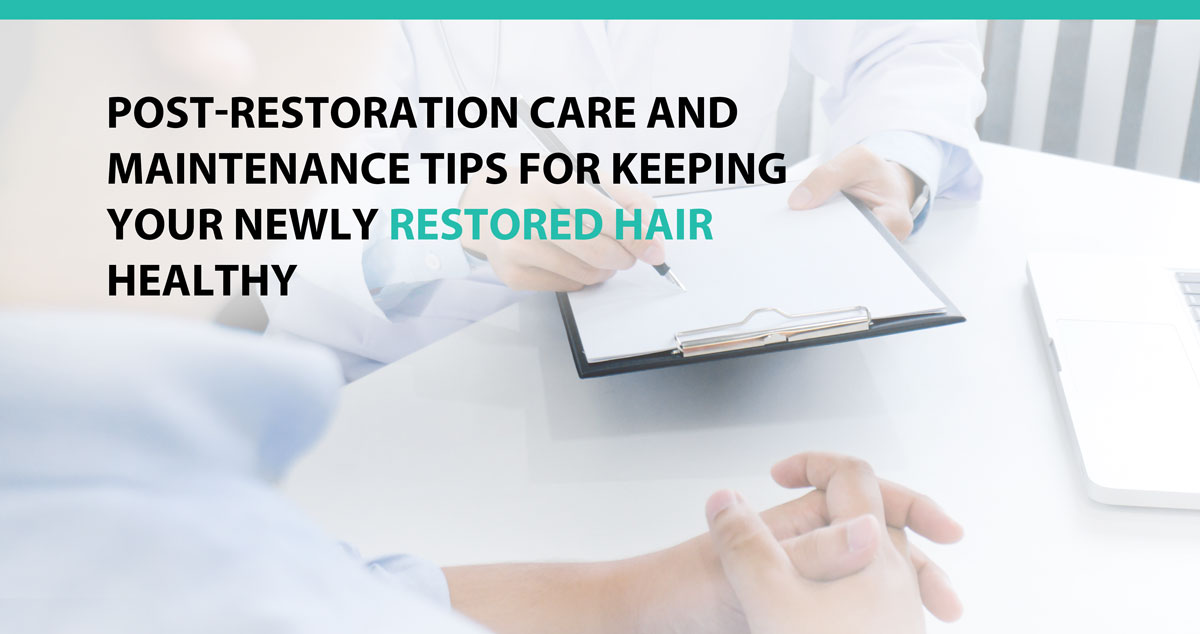
After a successful surgery, you need to follow a post-restoration hair care and maintenance routine. The first few weeks are critical to avoid swelling and infection. Dr. Joseph Williams will give you a list of guidelines to implement as you get used to your new situation. Other than aiding your recovery, these tips will guarantee the long term health of your scalp and hair:
- Hair Cleansing
This step is crucial because it keeps your follicles and scalp free of dirt, dead cells, and other unhealthy debris. Dr. Williams will recommend a special medical shampoo that you can start using about three days after surgery. Apply it gently because scrubbing may affect the newly transplanted hair. If you feel itchy around the donor area, some hair conditioner may relieve the urge to scratch. After washing, pat the area gently with a towel to dry it.
- Beard Care
If your beard was a donor site, keeping it healthy will be a part of your post-restoration hair care and maintenance regimen. Avoid shaving, scratching, or otherwise disturbing it for at least a week as you monitor its progress. Dr. Williams will give you special cleaning and soothing products to avoid irritation and scabbing.
- Shaving Ideas
Your hair will be delicate within the first two weeks after restoration. Although you might want to correct the imbalance in hair length, you should only do so after consulting Dr. Williams. After one month, you might receive the go-ahead to shave using scissors. It should strictly be a trimming shave, which you should do gently without touching the scalp or pulling the hair.
It’s not advisable to shave if the scabbing hasn’t cleared. After three months, your hair should be strong enough to withstand an electric shaver. However, be gentle because your scalp is still sensitive. Shave at a minimum height of 3mm to avoid unnecessary incisions and infection.
- Sleeping Position
You should avoid sleeping on your stomach or in a style that’s likely to cause friction. It’s advisable to sleep on your back in an upright position, preferably at a 45° elevation. This angle improves blood flow to the scalp, which helps you heal faster. You can rest your head on a travel pillow to avoid tossing and turning. Another great idea is to sleep on a recliner, which significantly reduces the chances of changing positions.
- Wearing a Hat
You’ll receive microscopic incisions during your hair transplant that will be mostly invisible. However, you might want to wear a hat for various reasons. If you go out in the first ten days, direct sunlight could harm your sensitive scalp. On the other hand, a hat can also worsen the irritation, swelling, or scabbing. You should wait two to three weeks before wearing one. If you must, choose loose and adjustable headwear.
- Post-Surgery Itching
Itching is a common side effect of hair restoration surgery. It’s part of the healing process around the donor and transplant parts of your scalp. Although it generally stops within a week, in some instances, it can take up to a month.
As hard as it might be, resist the urge to scratch your scalp immediately after surgery. A saltwater spray will be among the post-restoration hair care and maintenance products that Dr. Williams will provide. It soothes the itchy area while removing dirt. Other solutions include taking antihistamines and washing with medicated shampoo.
Start Your Hair Restoration Journey Today
At the Advanced Medical Hair Institute, we understand the challenges patients face after a hair transplant. Dr. Joseph Williams utilizes his exemplary skills and experience to ensure your post-restoration hair, care, and maintenance phase goes smoothly. He’ll also recommend the most technologically advanced and appropriate products and methods. The more cautious you are in the first few weeks, the faster you’ll heal. You can look forward to decades of thick, strong, and healthy hair. Please make an appointment today for all hair related inquiries.










